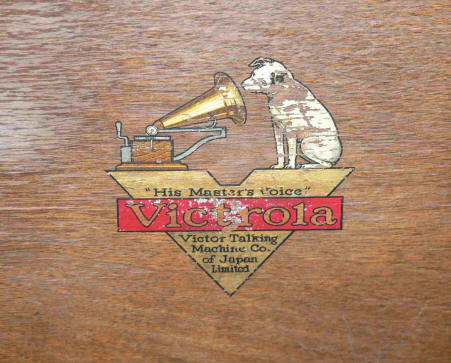The Victor-Victrola Page

Decals
Victor External Horn Decals
External horn Victor phonographs used a simple Victor logo decal located on the horn. The banner under the dog reads "Victor Talking Machine". Every Victor machine was originally supplied to the dealer with a Victor horn; however, please note that it was very common for dealers to sell Victor phonographs with aftermarket horns, which may have different decals and brand names not shown here.
METAL HORNS: The majority of Victor metal horns ("witches hat" and "flower" styles) horns use a decal with a black top half (below), however, some variations are known to exist. Certain models with colored horns, such as the "Victor 0", may use a decal with different background colors. Examples with a blue background, as well as with a yellow-brown lower half can be found.
WOODEN HORNS: Most Victor wood horns use a small decal with a green top half (below), however, some variations are known to exist.
Victrola Internal Horn Decals: "Look Under the Lid"
Every Victrola with a lid has a decal underneath, which became the primary brand identification for the company's phonographs for many years. Only the lidless machines (VV-IV, VV-VI, VV-1-1, VV-1-2, etc.) had the misfortune to be missing the fancy "Victrola" decal. Novice collectors often become excited that the decal is intact and in good shape on their Victrola, and many EBay Victrola advertisements proudly show multiple close-up views of the decal. While the decal can provide some degree of information on the date and rarity of the phonograph, it is hardly rare or unusual for an 80 year old Victrola to have a decal in perfect condition, since it was likely well protected by the closed lid while the phonograph was in storage. In addition, the decal was applied before the finish coat on the wood was applied, offering additional protection. So, nice decals are not rare or unusual.
There were a total of 5 basic styles (with minor variations) of under-lid decals used on Victrolas sold in the USA during the 1906-1929 period.
VARIATION ONE: The first version (below) was used only on very early VTLA models when the "Victrola" was first introduced in 1906 It is easily identified by the highly flared "V's" and the lack of a decorative border around the wording.
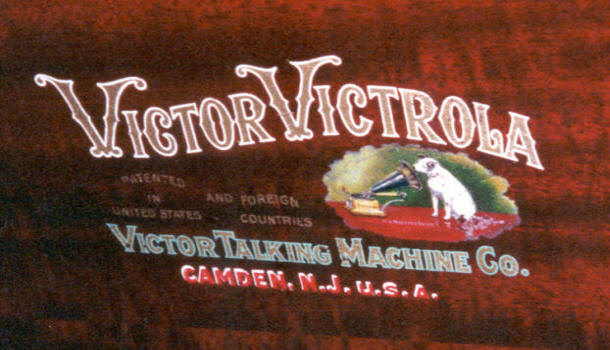
VARIATION TWO: The second iteration of decal was used on Victrolas between 1907 and 1909, and uses a fancy border, without the use of the highly flared "V's". The words "VictorVictrola" are arched (convex) in shape.
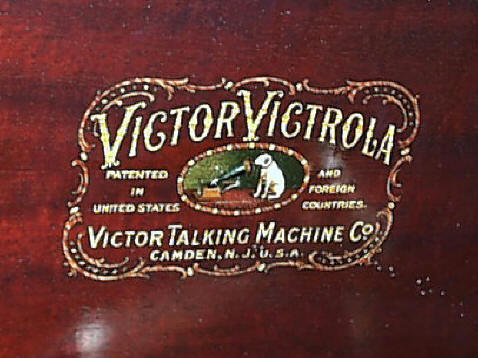
VARIATION THREE: The third decal design series uses a "concave" Victrola script. This design was used from 1910 through 1925, and is the most common decal, appearing on literally millions of machines. This decal has a similar border to the Victor Victrola decal shown above; the word "Victor" has been dropped from the title, leaving simply "Victrola". The first variation of this decal (1910-1915) (below) has only the words "Manufactured By" underneath the large "Victrola" name. The later version (1916-1925) (far below) has a very small line of patent information squeezed between the large "Victrola" name and the "Manufactured By" sentence. It takes a sharp eye to see the difference between the two variations.
Detail of later decal, showing additional line of patent information before the "Manufactured By" line:
Electrically powered Victrolas, called "Electrolas", were introduced right before Christmas 1913. These early electrics still used an acoustic horn for reproduction, but eliminated the need for spring winding by using an AC/DC motor. In 1915, some of these electric machines were given a modified decal (below) that indicated the electric motor feature. This decal was not used on all Electrola models.
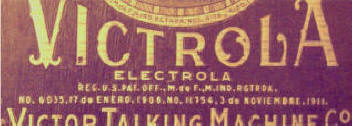
VARIATION FOUR: The fourth design was used on the early Orthophonics in the fall of 1925 through the spring of 1926. It used a square border, and a rather simple modern design.
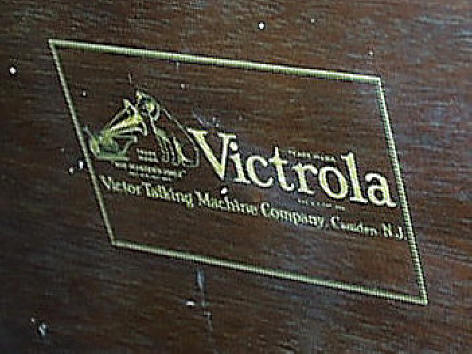
VARIATION FIVE: The fifth design, first appeared in mid-1926, and was used on most Orthophonic models up until RCA purchased Victor in 1929. This is a triangular emblem, and is quite common.
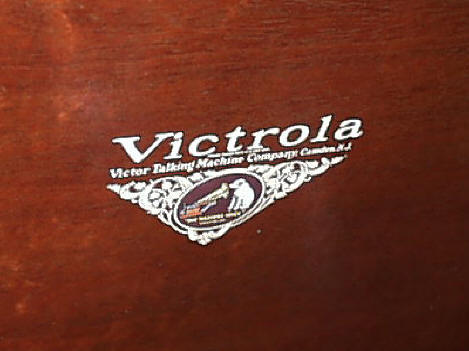
VARIATION SIX : The sixth design appeared on electronically amplified Victrolas and radio-phono combination sets in the fall of 1925. Like the electric-motor Victrolas which were first introduced in 1913, these machines were also referred to as "Electrolas", but used a triangular decal similar to #5 (above). Note that the Electrola name used after 1925 refers to tube-amplified machines, while the 1913-1924 Electrolas refer only to the use of an electric motor (rather than springs) to power the turntable.
POST-VICTOR DECAL: Immediately after The Victor Talking Machine Company was sold in January of 1929, most products used a "transition" decal as seen below until RCA took full control of the company in October of that year. Note the reference to "Victor Talking Machine Division" and "Radio-Victor Corporation of America". This decal was replaced with the familiar "RCA Victor" logo by 1930.
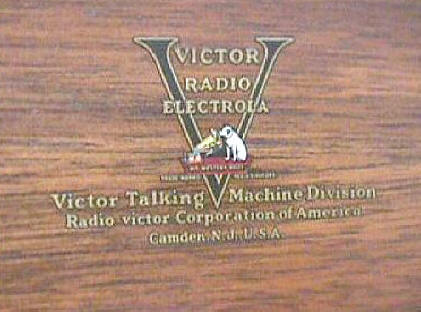
CANADIAN VARIANTS: Canadian Victors and Victrolas used the same decals as were used in the USA until the mid-1920's. Orthophonic and electronically-amplified Victrolas produced in Canada after 1925 began using different decals than the US versions. A number of variations on these designs have been documented, some with advertising phrases incorporated into the design.
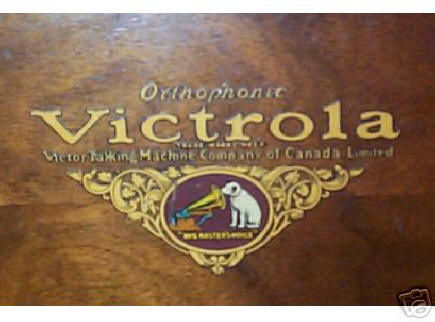
JAPANESE VARIANTS: Several different decals were used over the years for machines produced by Victor's Japanese subsidiary.
